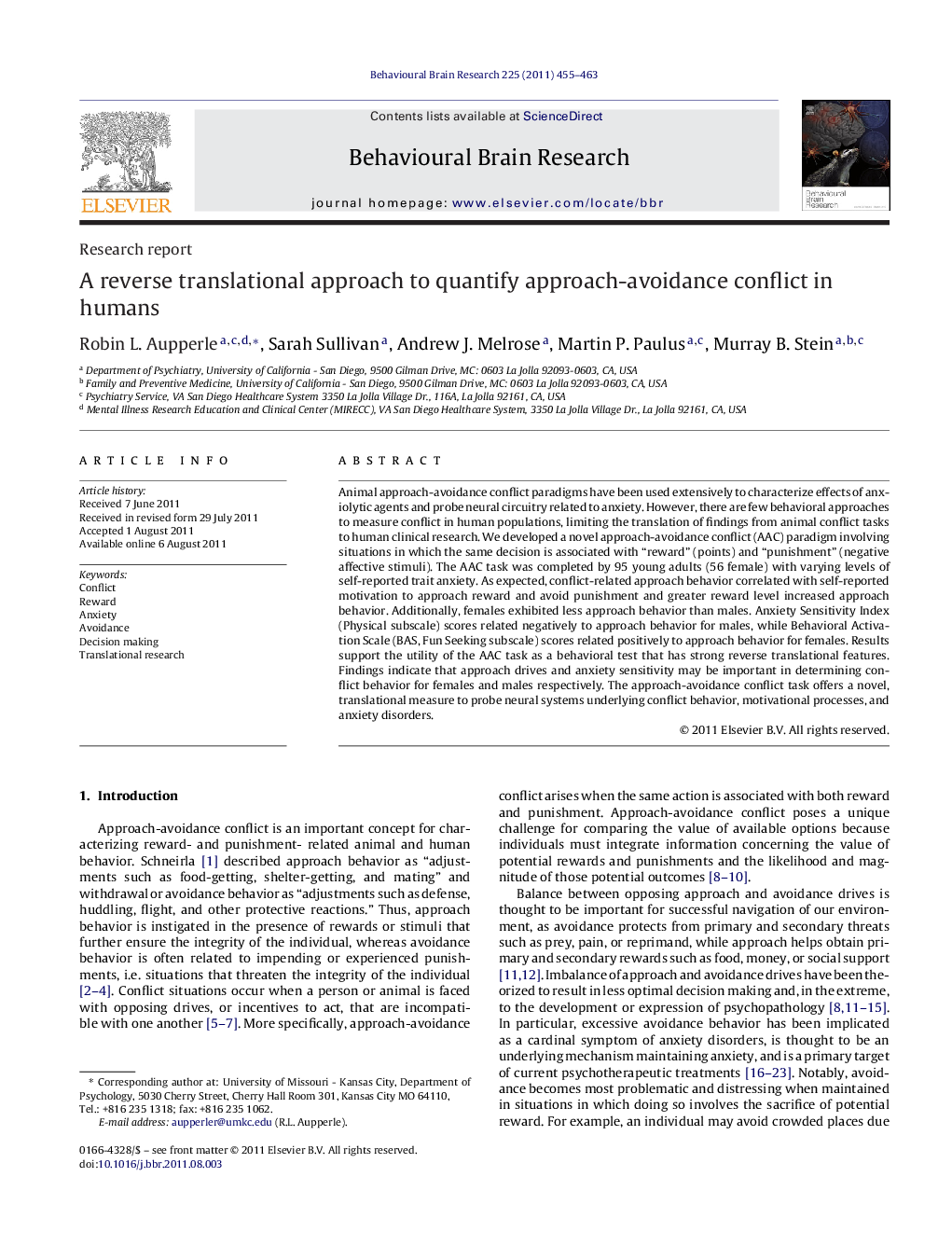| Article ID | Journal | Published Year | Pages | File Type |
|---|---|---|---|---|
| 4313574 | Behavioural Brain Research | 2011 | 9 Pages |
Animal approach-avoidance conflict paradigms have been used extensively to characterize effects of anxiolytic agents and probe neural circuitry related to anxiety. However, there are few behavioral approaches to measure conflict in human populations, limiting the translation of findings from animal conflict tasks to human clinical research. We developed a novel approach-avoidance conflict (AAC) paradigm involving situations in which the same decision is associated with “reward” (points) and “punishment” (negative affective stimuli). The AAC task was completed by 95 young adults (56 female) with varying levels of self-reported trait anxiety. As expected, conflict-related approach behavior correlated with self-reported motivation to approach reward and avoid punishment and greater reward level increased approach behavior. Additionally, females exhibited less approach behavior than males. Anxiety Sensitivity Index (Physical subscale) scores related negatively to approach behavior for males, while Behavioral Activation Scale (BAS, Fun Seeking subscale) scores related positively to approach behavior for females. Results support the utility of the AAC task as a behavioral test that has strong reverse translational features. Findings indicate that approach drives and anxiety sensitivity may be important in determining conflict behavior for females and males respectively. The approach-avoidance conflict task offers a novel, translational measure to probe neural systems underlying conflict behavior, motivational processes, and anxiety disorders.
► Approach avoidance conflict tests are used extensively to model anxiety in animals. ► We present a novel approach-avoidance conflict paradigm for use in human research. ► Females exhibited less approach behavior during conflict than males on the task. ► Anxiety level influenced behavior for males while reward drives influenced behavior for females. ► This novel conflict task provides a translational model for use in human anxiety research.
